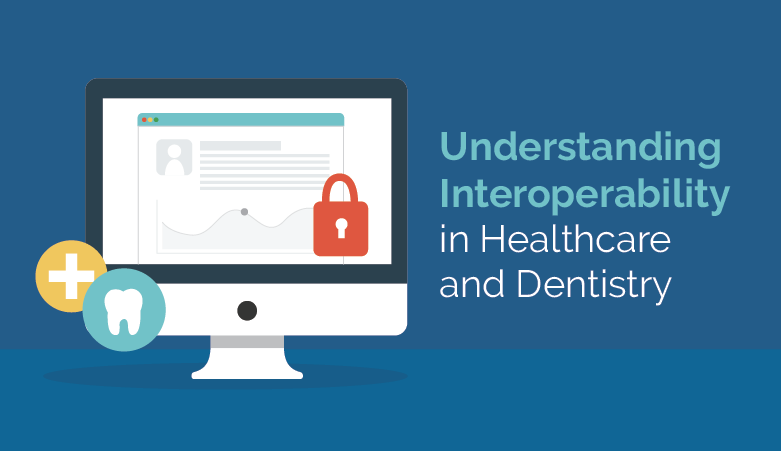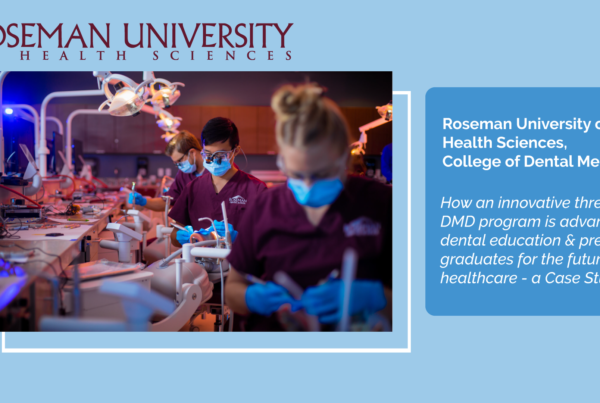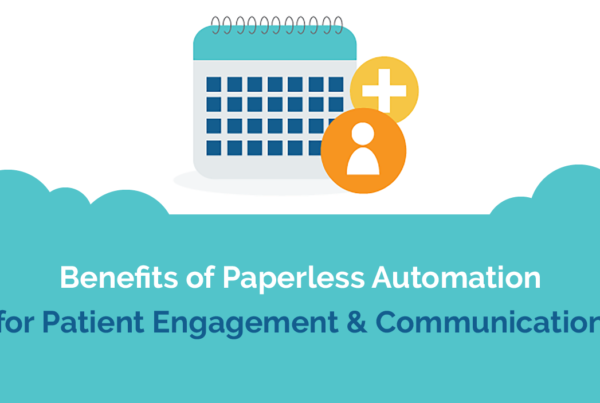As technology continues to transform at a rapid pace, the healthcare industry has made a wide effort in utilizing digital options to improve its operations across the board. In fact, according to The Office of the National Coordinator for Health Information Technology, 86% of office-based physicians in the United States reportedly adopted some form of electronic health record system, while 80% had maintained a certified EHR as of 2017.
More specifically in regard to the world of dentistry, Dental Informatics has become an area of increased interest over the last decade, as noted by the American Dental Association. More dental schools and practices are utilizing EHRs and other digital systems to encourage the new age of healthcare communications.
To ensure seamless results of health IT in dentistry, interoperability is a concept that must be learned and understood thoroughly. Interoperability in healthcare is a mechanism that will only improve with time through rigorous research, data and enhanced IT structures.
In this article, we’ll define interoperability, discuss the factors that impact healthcare interoperability and review the top five goals of interoperability in the dentistry space.
What is Interoperability?
Section 4003 of the 21st Century Cures Act defines interoperability as the health IT that “enables the secure exchange of electronic health information with, and use of electronic health information from, other health information technology without special effort on the part of the user; allows for complete access, exchange, and use of all electronically accessible health information for authorized use under applicable state or federal law.”
Interoperability was designed to ensure providers have a central space to access health information in a secure format. This not only establishes security for individuals to access their own health information but also allows all involved health agencies to gain access to data that enables them to properly learn, develop and deliver the most effective treatment.
What Are the Factors That Impact Healthcare Interoperability?
Improving interoperability in healthcare and dentistry aligns with the willingness to take advantage of emerging technologies that improve the exchange of health information and data collection. Here are a few of the factors that impact interoperability and how they can be utilized to improve the effectiveness of health IT transfer:
Data Gathering
Information blocking remains a critical issue in the healthcare system, according to a University of Michigan School of Information and School of Public Health study. Researchers Julia Adler-Milstein, Ph.D., and Eric Pfeifer found that 50% of respondents reported participating with EHR providers that admitted to information blocking. Without access to necessary information, healthcare interoperability becomes a less effective mechanism.
“Current ONC efforts and bills in Congress pursue enforcement by authorizing the OIG to investigate and establish deterrents to information blocking,” researchers concluded. “If successful, reducing information blocking will help ensure that data follow patients across provider organizations, which is essential to improving the quality and efficiency of care.”
Standard Procedures
Adopting baseline standards to improve not only the infrastructure but also the lines of communication between all parties involved is critical, according to the Healthcare Leadership Council (HLC) and the Bipartisan Policy Center.
“Providers, software developers, payers, and organizations representing individuals, should collaborate on efforts to explore, pilot, and evaluate the feasibility of widespread adoption of patient-centred approaches to identification,” the organizations wrote in a recent report.
Following standard procedures as a part of the Health IT Certification Program and the Fast Healthcare Interoperability Resource can also enable providers to follow common policy regarding application programming interfaces (APIs) to enhance infrastructure.
What Are the Benefits of Interoperability in Dentistry?
By following standard procedures and streamlining the collection of data, interoperability in healthcare and dentistry can improve. With these developments come various benefits.
Here are a few of the top goals of interoperability in healthcare.
1. Reduced Errors and Improved Efficiency
Without interoperability, many systems still require manual input, reporting and analysis of data which, in turn, can create an opportunity for error. The integration of software to a primary EHR system allows for an easy and secure flow of information.
2. More Accurate Reporting
Your healthcare system only gives what it gets, meaning the amount of information you are willing to put into your system is how much data you can retrieve. With that ideology, it would serve to say that the interoperability of your system is crucial for improving your reports and obtaining a high-level analysis of trends.
Adopting interoperable digital health technologies allows for a steady stream of data to populate into your EHR from a variety of advanced tools and systems. With that data comes to a complete picture of your patients, and, in turn, ensures the improved accuracy of reporting. In the long-term, these detailed reports will allow for a review of high-level trends.
3. Increased Value of ‘Best-of-Breed’ Products
The healthcare industry adopts technologies that work for their core needs. These best-of-breed solutions work so well for the healthcare and dental industry because they were made specifically for their needs and uphold high regulatory requirements.
These specific products are also including interoperability in their pre-existing systems by securely expanding data sharing opportunities and partnering with advanced technology systems. For example, in the academic dental industry, Exan Software partners with companies who specialize in areas such as 3D-Imaging and Online Payments, finding ways to improve both the doctor and patient experience.
4. Better Access to More Complete Patient Records
Patients go to various facilities for their healthcare needs. That means the expectation of wanting one system to capture all their data from multiple care providers in the industry just isn’t realistic.
What can be expected, however, is the interoperability of these systems to connect with each other and securely share data to populate a more complete patient record. The goal isn’t to have a software that does everything – it’s to have a software that can connect to everything.
5. Improved Patient Safety
With the knowledge that every patient’s data lives in various places, it seems almost inevitable that without a complete patient record, errors can be made and could potentially put the health and safety of the patient at risk. Interoperability ensures your systems, in addition to patient cooperation, provide the best patient-care experience possible.
In Conclusion
axiUm Academic Dental Software is Exan Group’s one-stop-shop practice management solution, turning the concept of interoperability in healthcare into a reality. Contact us today to learn more about this system.
Sources:
https://www.exansoftware.com/top-5-benefits-interoperability-healthcare-dentistry/
https://ehrintelligence.com/news/9-ways-to-improve-health-it-interoperability-patient-data-access
https://www.healthit.gov/topic/interoperability
https://www.healthit.gov/sites/default/files/cures/2020-03/ONC_Cures_Act_Final_Rule_03092020.pdf
https://www.ada.org/en/member-center/member-benefits/practice-resources/dental-informatics
https://dashboard.healthit.gov/quickstats/pages/physician-ehr-adoption-trends.php
https://ehrintelligence.com/news/top-5-challenges-to-achieving-healthcare-interoperability
https://ehrintelligence.com/news/health-information-exchanges-report-information-blocking
https://onlinelibrary.wiley.com/doi/full/10.1111/1468-0009.12247
https://ehrintelligence.com/news/interoperability-improvements-stagnated-between-2015-and-2017





